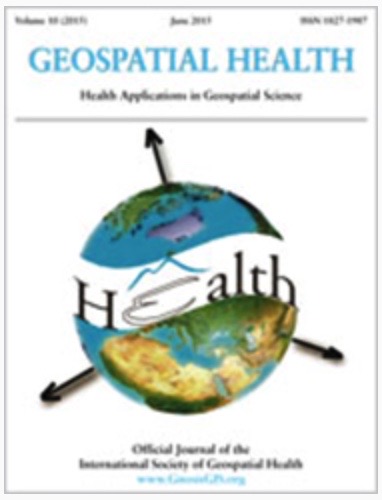Understanding how distance to facility and quality of care affect maternal health service utilization in Kenya and Haiti: A comparative geographic information system study

Published: 14 May 2019
Abstract Views: 3987
PDF: 2107
HTML: 315
HTML: 315
Publisher's note
All claims expressed in this article are solely those of the authors and do not necessarily represent those of their affiliated organizations, or those of the publisher, the editors and the reviewers. Any product that may be evaluated in this article or claim that may be made by its manufacturer is not guaranteed or endorsed by the publisher.
All claims expressed in this article are solely those of the authors and do not necessarily represent those of their affiliated organizations, or those of the publisher, the editors and the reviewers. Any product that may be evaluated in this article or claim that may be made by its manufacturer is not guaranteed or endorsed by the publisher.
Similar Articles
- Tariq Abbas, Hendrik Wilking, Christoph Staubach, Mario Ziller, Franz Josef Conraths, Priority areas for surveillance and prevention of avian influenza during the water-bird migration season in Pakistan , Geospatial Health: Vol. 6 No. 1 (2011)
- Hassan M. Khormi, Lalit Kumar, Ramze A. Elzahrany, Modeling spatio-temporal risk changes in the incidence of dengue fever in Saudi Arabia: a geographical information system case study , Geospatial Health: Vol. 6 No. 1 (2011)
- Jennifer Weisent, Barton Rohrbach, John R. Dunn, Agricola Odoi, Detection of high risk campylobacteriosis clusters at three geographic levels , Geospatial Health: Vol. 6 No. 1 (2011)
- Emmanuel Roux, Annamaria de Fátima Venâncio, Jean-François Girres, Christine A. Romaña, Spatial patterns and eco-epidemiological systems - part II: characterising spatial patterns of the occurrence of the insect vectors of Chagas disease based on remote sensing and field data , Geospatial Health: Vol. 6 No. 1 (2011)
- Emmanuel Roux, Annamaria de Fátima Venâncio, Jean-François Girres, Christine A. Romaña, Spatial patterns and eco-epidemiological systems - part I: multi-scale spatial modelling of the occurrence of Chagas disease insect vectors , Geospatial Health: Vol. 6 No. 1 (2011)
- Steven K. Ault, Ruben Santiago Nicholls, Martha IdaIí Saboya, The Pan American Health Organization's role and perspectives on the mapping and modeling of the neglected tropical diseases in Latin America and the Caribbean: an overview , Geospatial Health: Vol. 6 No. 3 (2012)
- Sarah K. Konrad, Li Zou, Scott N. Miller, A geographical information system-based web model of arbovirus transmission risk in the continental United States of America , Geospatial Health: Vol. 7 No. 1 (2012)
- Kwang-Soo Lee, Kyeong-Jun Moon, Hospital distribution in a metropolitan city: assessment by a geographical information system grid modelling approach , Geospatial Health: Vol. 8 No. 2 (2014)
- Jia-Cheng Zhang, Wen-Dong Liu, Qi Liang, Jian-Li Hu, Jessie Norris, Ying Wu, Chang-Jun Bao, Fen-Yang Tang, Peng Huang, Yang Zhao, Rong-Bin Yu, Ming-Hao Zhou, Hong-Bing Shen, Feng Chen, Zhi-Hang Peng, Spatial distribution and risk factors of influenza in Jiangsu province, China, based on geographical information system , Geospatial Health: Vol. 8 No. 2 (2014)
- Hassan M. Khormi, Lalit Kumar, Climate change and the potential global distribution of Aedes aegypti: spatial modelling using geographical information system and CLIMEX , Geospatial Health: Vol. 8 No. 2 (2014)
You may also start an advanced similarity search for this article.











